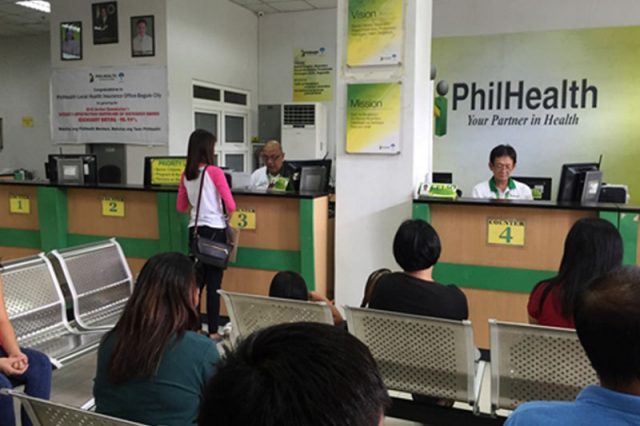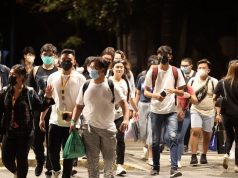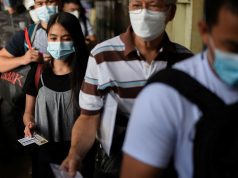
An official of the state health insurer’s admission that the system could fail by 2027 in providing services to the public alarmed Filipinos, particularly its members.
Officer-in-charge Eli Dino Santos of the Philippine Health Insurance Corporation admitted the state firm’s actuarial life will not extend beyond 2027, five years from now.
He made the pronouncement during the deliberation of the health department’s proposed 2023 budget by the House Committee on Appropriations on Monday.
PhilHealth is under the Department of Health.
Santos said that for PhilHealth to extend beyond 2027, it will need funding subsidies from other contributors other than the Philippine Amusement and Gaming Corporation (Pagcor) and the Philippine Charity Sweepstakes Office (PCSO).
He added that if the state insurer only receives PAGCOR and PCSO pork for 2023, “per DBM-recommended (Department of Budget and Management) NEP (National Expenditure Program), the subsequent years,” it will last until 2027.
PhilHealth officials said that it had P171.2 billion worth of income in 2021.
The gross margin was reduced to P31 million after the deduction of benefit expenses amounting to P140.2 billion. There was also the deduction of operational expenses amounting to P7.8 billion, plus interest and other income worth P9.7 billion.
This left PhilHealth with a net income of P32.8 billion.
Santos said that if the state insurer receives “all the subsidy from the government” and if they “implement” PhilHealth’s programs, it will last beyond 2027.
‘Nakaka-nerbiyos’
His comments didn’t amuse Rep. Stella Quimbo (Marikina, Second District), an economist, who is the vice chairperson of the appropriations committee.
She warned the PhilHealth officials against saying such comments, adding that it could make the contributing members panic since they might think the state insurer’s coverage has an expiration date.
“Kasi tuwing tinatanong natin kung ano ang actuarial life ng PhilHealth, lagi ninyong sinasabi sa amin na mamamatay na ang PhilHealth,” Quimbo, an economist, said.
“Kanina tinanong din ano ang actuarial life, hindi makasagot si Mr. President. Ang sabi niya, kung itutuloy ninyo ang subsidy, aabot naman siguro ng 2027. Nakaka-nerbiyos po ‘yung mga pronouncements na ‘yun,” she added.
“Tuwing mag-i-introduce kayo ng benefit payments, that is subject to actuarial validation, tama po? … Sa ngayon sa kinikita ninyo, the only way na mamamatay ang pondo is kung mamimigay kayo ng benefits way more than what you have. At hindi ninyo hahayaan mangyari ‘yun,” the lawmaker continued.
Santos then assured the House panel that “PhilHealth will last forever.”
“PhilHealth will last forever.”
“On the side of PhilHealth, we really need the support of the national government in providing for the subsidy. We really need the support as provided under the Universal Healthcare Law, coming from the PCSO, and the Pagcor as well as the sin tax […] if we receive all this support, then PhilHealth will definitely last beyond 2027,” he said.
PhilHealth is set to receive some P34.99 billion in 2023 to improve its benefit packages under the Universal Healthcare Act.
‘Dagger to heart of entire public health system’
Santos’ comments about the state insurer’s supposed limited service expectedly alarmed Filipinos despite Quimbo’s warning to the officials.
Some worried about how it would affect the public healthcare system’s structure, especially with the ongoing COVID-19 pandemic and the threat of monkeypox.
“THE IMPENDING FAILURE of Philhealth is a dagger to the heart of the entire public health system of the Philippines,” a Twitter user commented on the reports.
“A clear manifestation of a corrupt, stinking system of governance that you wish it’s only a nightmare so that it’s gone when you wake up,” the user added.
Another Filipino pointed out how much the public relies on the state insurer.
“‘”May PhilHealth naman ako, ‘di ko na need ng health insurance!'” a Twitter user wrote in quotes.
“Think again,” she added, sharing a news item that reported on Santos’ comments.
PhilHealth is responsible for providing “affordable, acceptable, available and accessible health care services for all citizens of the Philippines,” according to its website.
It says it “shall serve as the means for the healthy to help pay for the care of the sick and for those who can afford medical care to subsidize those who cannot.”
“The program shall include a sustainable system of funds constitution, collection, management and disbursement for financing the availment of a basic minimum package and other supplementary packages of health insurance benefits by a progressively expanding proportion of the population,” its mandate said.
Scenarios of PhilHealth’s supposed limited service come as the government eases its face mask policy, a move that bothers some Filipinos as the country continues to deal with a public health emergency.
President Ferdinand Marcos Jr on Monday—the same day that Santos made such comments—signed an executive order allowing the voluntary removal of masks in outdoor areas that are not crowded and have good ventilation.
The easing prompted some citizens to remind the public of the risks that come with the new policy, such as dealing with low booster coverage, incidents of failure to adhere to safety protocols, and the recent uptick of cases in the metro.
ALSO READ: Public reminded of risks as gov’t OKs voluntary face mask removal outdoors
In the past week, the health department said that the country had recorded over 15,000 additional cases of COVID-19.
OCTA Research Group also recently warned of Metro Manila’s increase in reproductive rate or the number of people that a COVID-19 case can infect.
It said that the National Capital Region’s reproduction rate increased to 1.11 as of September 7. It was only 0.93 on August 31.









